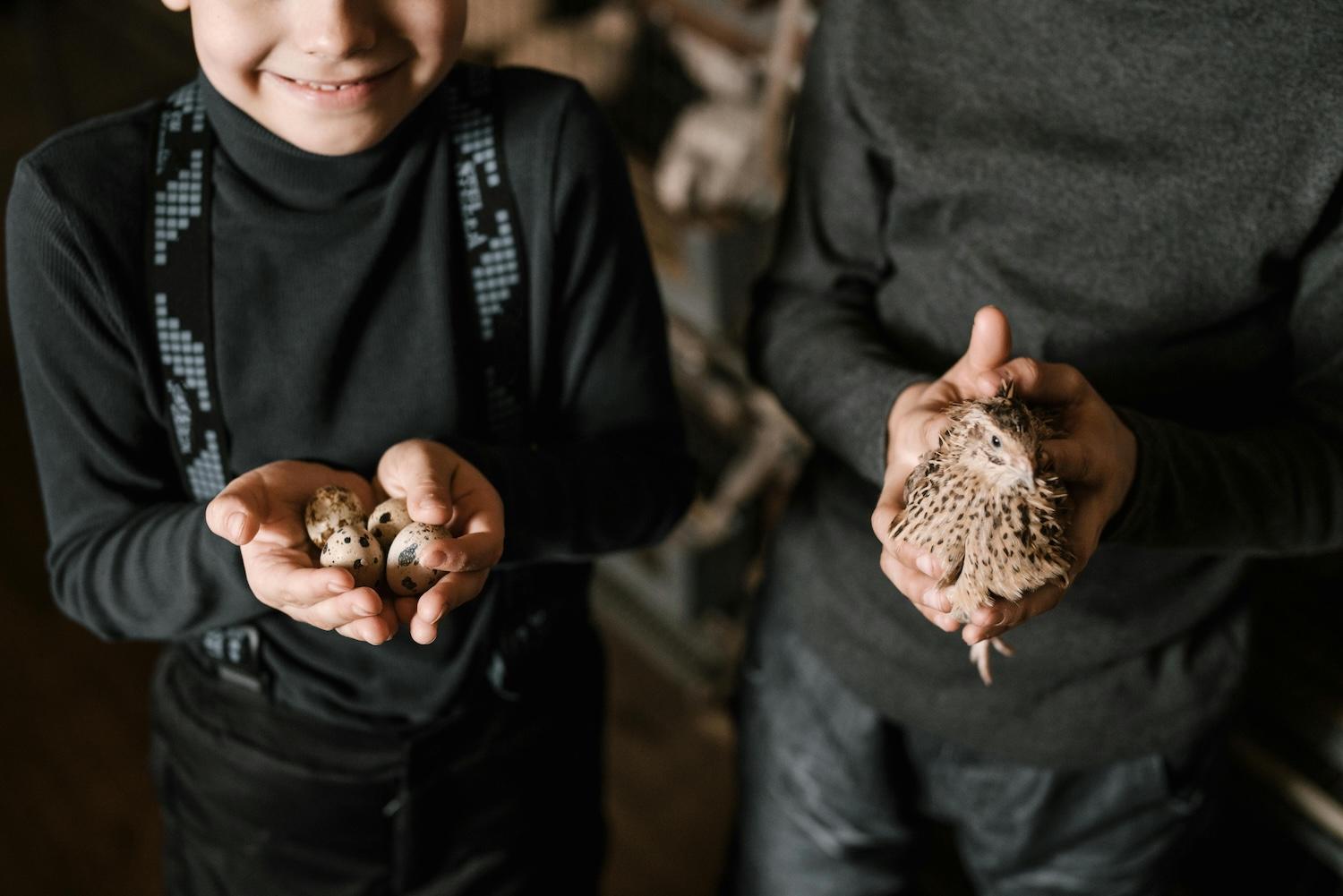Few classroom moments captivate like the instant a tiny beak cracks through an eggshell. Whether it happens in a science lab, homeschool room, or through a virtual hatching kit, watching a quail’s life begin sparks real curiosity about biology, agriculture, and care for living things.
🐣 Why Quail Make the Perfect Classroom Hatchlings
Teachers and parents often choose quail over chickens for hands-on hatching projects—and for good reason.
- Faster growth: Coturnix quail hatch in about 17–18 days, compared to ~21 for chickens (BMC Veterinary Research, 2025).
- Compact size: They fit easily in small incubators and brooders—ideal for classrooms or home learning spaces (North Carolina Cooperative Extension, 2024).
- Gentle introduction to animal care: Students can observe every stage of development in a shorter, manageable timeframe.
- Quiet and clean: Quail chicks are calm, tidy, and easy to handle with supervision.
Projects like these connect biology, agriculture, and real-world responsibility in one unforgettable experience.
Curious about the science that makes it all possible? Explore From Egg to Hatch: The Science of Quail Incubation to learn how temperature, humidity, and timing work together for a successful hatch.
🔬 Lessons That Go Beyond Science
- Biology and embryology: Students learn about fertilization, incubation, and growth inside the egg (Poultry Science, 2024). Candling (using a small flashlight) lets them view development stages without disturbing the embryo.
- Data and measurement: Daily temperature and humidity checks reinforce math and record-keeping (Canadian Journal of Animal Science, 2024).
- Engineering and design: Understanding how incubators maintain stable conditions introduces heat transfer, airflow, and precision control.
- Ethics and responsibility: Students see firsthand that living systems depend on consistency and care. Conversations about humane treatment and sustainability arise naturally.
- Observation and reflection: Watching chicks hatch encourages patience, focus, and curiosity about where food systems begin.
🏡 Bringing the Experience Home
Families and co-ops can use virtual hatching kits or partner with local hatcheries to experience the quail life cycle safely. Programs in Texas supply fertilized eggs, incubators, and simple educational guides.
If space or local rules limit animal projects, virtual options still deliver impact. Students can watch live camera feeds or time-lapse videos of quail development while sketching, recording data, and writing reflections (North Carolina Cooperative Extension, 2024).
🧭 Tips for Educators and Parents
- 🕓 Plan ahead: Allow about three weeks for incubation and early chick care.
- 🌡️ Check daily: Keep temperature around 99.5°F and humidity near 45–50% (Canadian Journal of Animal Science, 2024).
- 📓 Keep a journal: Record conditions and milestones—perfect for science and writing integration.
- 🤝 Partner locally: Coordinate with a licensed hatchery or small farm to rehome chicks after your project.
- 🌿 Talk about sustainability: Discuss why farmers raise quail—for eggs, conservation, and responsible food production (Poultry Science Journal, 2024).
🧠 FAQ
How long does it take a quail egg to hatch?
Coturnix quail typically hatch in about 17–18 days. Bobwhite quail take closer to 23–24 days, depending on temperature and humidity.
Do quail chicks need special food?
Yes. They need a high-protein starter crumble (around 28–30%) to support rapid growth in their first few weeks.
What should you do with the chicks afterward?
Partner with a local hatchery, farm, or 4-H program. Many will take chicks back after classroom hatching projects.
Is classroom hatching ethical?
Ultimately, educators must decide where they stand on bringing animals into the classroom. Still, there are ways to ensure the approach is thoughtful. Students should understand that these are living animals, not short-term science experiments, and partnering with a responsible hatchery helps ensure chicks are rehomed appropriately.
📚 Related Reading
- Thinking About Raising Quail?
- Coturnix vs Bobwhite: What’s the Difference?
- How to Store, Wash, and Handle Quail Eggs Safely
- From Egg to Hatch: The Science of Quail Incubation
📚 References
- North Carolina Cooperative Extension (2024). Incubating Quail Eggs.
- BMC Veterinary Research (2025). Hatching performance of Japanese quail from eggs stored for different periods under controlled conditions.
- Poultry Science (2024). Impacts of storage period and egg weight on hatching performance, embryonic mortality and chick quality of Japanese quail eggs.
- Poultry Science Journal (2024). The relationship between eggshell color, hatching traits, and embryonic mortality in Japanese quail eggs.
- Canadian Journal of Animal Science (2024). The effect of temperature and humidity index on egg-laying, egg quality, and hatching parameters in Japanese quail (Coturnix japonica).





